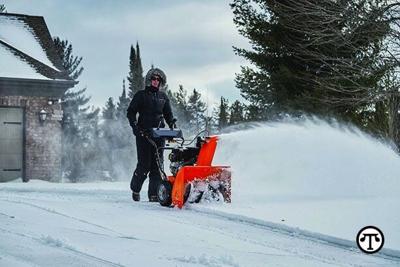(NAPSI)—When winter weather comes, the Outdoor Power Equipment Institute (OPEI) encourages home and business owners to review safety tips and ready their snow throwers—often referred to as snow blowers—and other winter equipment.
“Weather is more unpredictable now than ever, so you want to get your snow blower serviced now, before repair shops are busy,” says OPEI President and CEO Kris Kiser.
He offers these tips:
Read your owner’s manual. Review safe handling procedures. Know how to operate the controls. If the manual cannot be found, look it up online, and store a copy on your computer.
Check your equipment. Completely power off equipment when inspecting it.
Get the right fuel. Be sure to use the correct fuel, as recommended by the equipment’s manufacturer. Fuel that is more than 30 days old can phase separate and cause operating problems. Buy gasoline ahead of a storm. For more information see: https://www.opei.org/programs/ethanolwarning/ .
Use gasoline safely. Before you start the engine, fill up the fuel tank on your snow thrower while the engine is cold and outside your home or garage. Never add fuel to a running or hot engine. Store the gasoline in a fuel container and label with date purchased and the ethanol content. Make sure fuel is stored safely and out of the reach of children.
Charge batteries. If using a battery/electric-powered snow blower, make sure batteries are fully charged in advance of a winter storm in case electricity goes out—and always use manufacturer-approved batteries for equipment.
Clear yard of obstructions. Doormats, hoses, balls, toys, boards, wires, and other debris should be removed. When run over by a snow thrower, these objects may harm the machine or people.
Dress properly. Locate safety gear and put it in an accessible place. Plan to wear safety glasses, gloves and footwear that can handle cold and slippery surfaces.
Have a clean-out tool or stick ready. NEVER put your hands inside the auger or chute. Use a clean-out tool (or stick) to unclog snow or debris from your snow thrower.
Turn off your snow thrower if you need to clear a clog. Turn off the machine and wait for all moving parts to come to a complete stop before clearing any clogs or debris.
Operate your snow thrower only in visible conditions. Never operate the snow thrower without good visibility or light.
Aim your snow thrower with care. Never throw snow toward people or cars. Don’t let anyone stand in front of your snow thrower.
Use extreme caution on slopes and hills. Do not attempt to clear steep slopes and use caution when changing directions on slopes or inclines.
Know where your cord is. If using a corded electric-powered snow thrower, use an extension cord that is weather-resistant and designed for outdoor use and do not run over the power cord.
Keep pets and children inside while the snow thrower is operating. Kids and pets may love to play in the white stuff, but it’s best to keep them inside your home and supervised (by someone else) while a snow thrower is operating. Do not allow them to play in the snow as it is tossed out of the chute.
Learn More
For more safety information on using outdoor power equipment and being weather ready, go to WeatherItBetter.com.
Word Count: 575







(0) comments
Welcome to the discussion.
Log In
Keep it Clean. Please avoid obscene, vulgar, lewd, racist or sexually-oriented language.
PLEASE TURN OFF YOUR CAPS LOCK.
Don't Threaten. Threats of harming another person will not be tolerated.
Be Truthful. Don't knowingly lie about anyone or anything.
Be Nice. No racism, sexism or any sort of -ism that is degrading to another person.
Be Proactive. Use the 'Report' link on each comment to let us know of abusive posts.
Share with Us. We'd love to hear eyewitness accounts, the history behind an article.